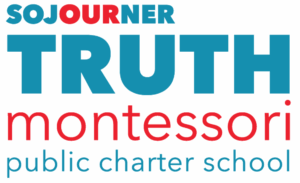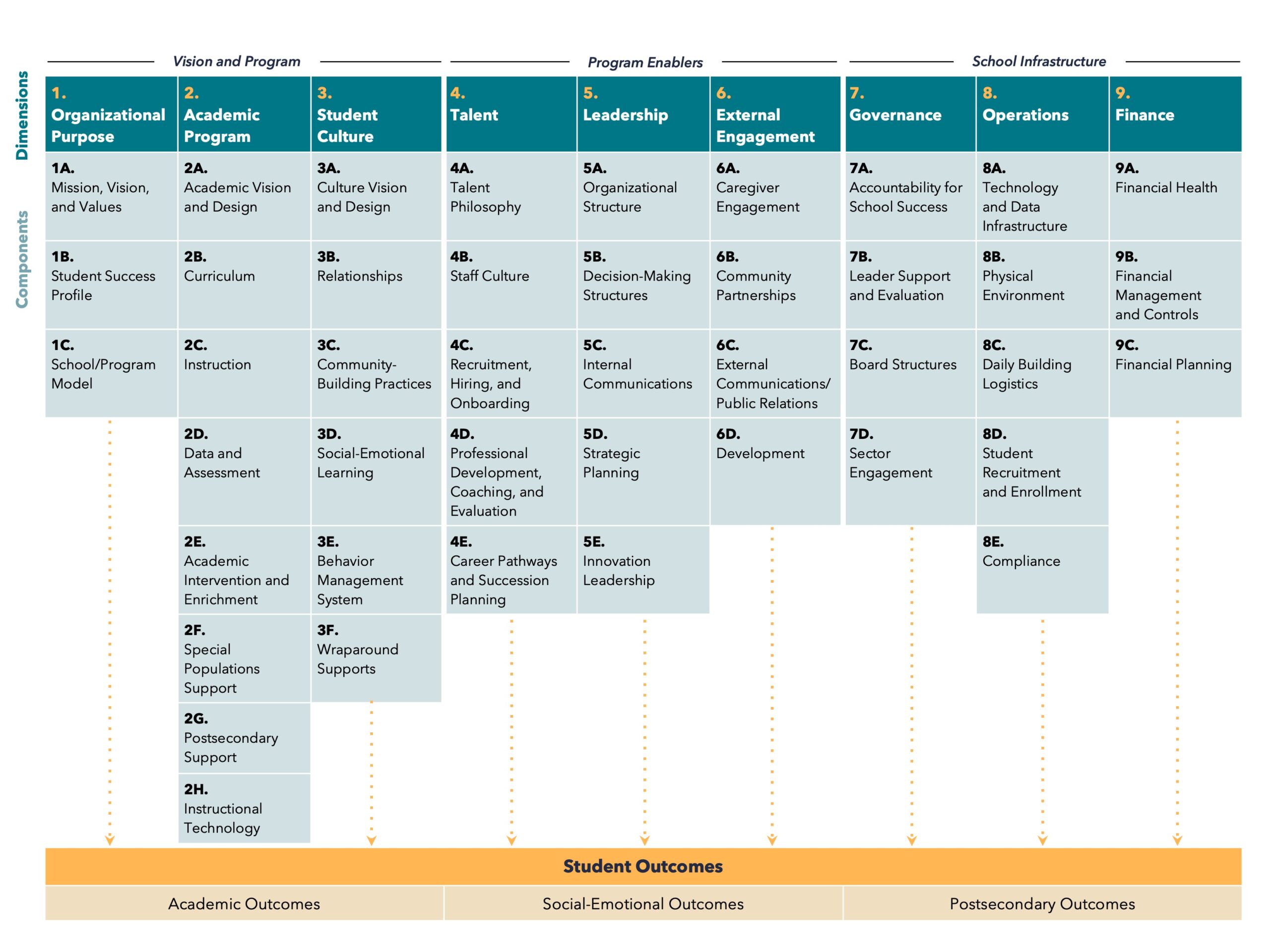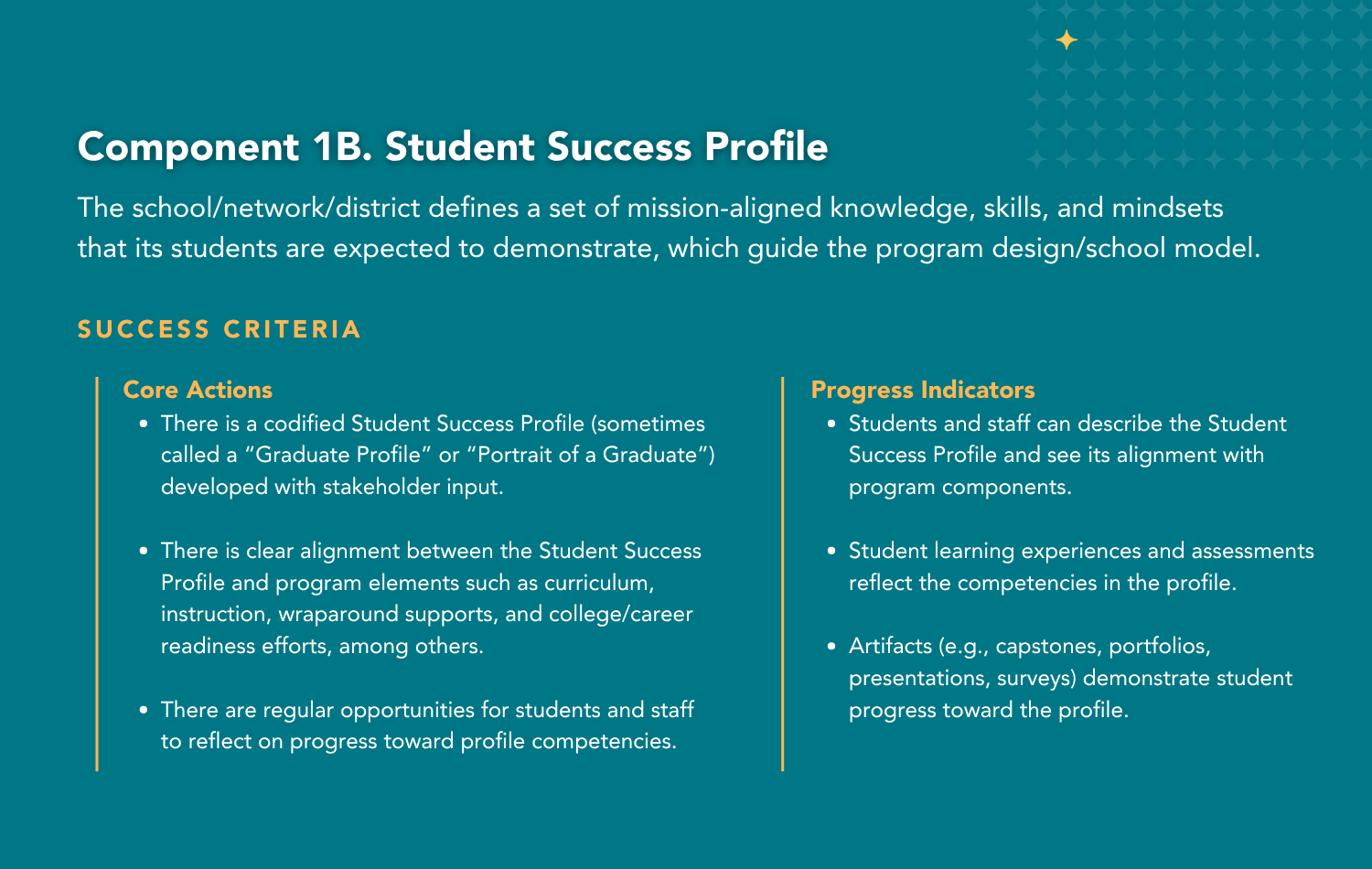This is the second post in a series on Bellwether’s School Quality Framework, highlighting exemplary schools and systems at different stages of their improvement journeys.
A school’s mission should be more than a statement. It should be a dynamic philosophy that students, staff, and community members live out every day.
Bellwether’s School Quality Framework (SQF), helps schools turn that philosophy into practice. SQF defines nine dimensions of school excellence — from academics to student culture to operations — and breaks them down into clear, actionable components.
Bellwether’s School Quality Framework (click to enlarge)
SQF begins with organizational purpose. At its core, this dimension is about the school’s identity — the “why” that anchors decisions, guides strategy, and unifies the community. Two ways that schools can bring their mission to life are through a student success profile (a clear picture of the knowledge, skills, and mindsets a student should possess upon graduation) and a school or program model that brings that mission to life.
Component 1B. Student Success Profile (click to enlarge)
Component 1C. School/Program Model (click to enlarge)
The co-founders of Sojourner Truth Montessori Public Charter School (Truth) in the nation’s capital — Denise Edwards, founding principal, and Justin Lessek, founding executive director — know firsthand how essential a strong student success profile and program model are. The school’s Truth Competency Framework codifies the knowledge, skills, and values its graduates should embody. And its program model reimagines what secondary education can look like: extended work blocks, mixed-age classrooms, personalized work plans, and a school culture centered on wellness, joy, and the many possibilities that life can hold after high school graduation.
We sat down with the co-founders to reflect on their origin story and points of pride, and the intentional program design that aligns Truth’s daily practices with its mission. Their answers have been edited for clarity and length.
Stephanie Spangler: What led you to start D.C.’s first Montessori middle and high school?
Denise Edwards: The idea for Truth came from a group of families and staff at an elementary Montessori school in D.C. They loved the approach and wanted to create a middle and high school that continued the Montessori education model.
 Justin Lessek: As we started to learn more about Montessori, we fell in love with this philosophy that’s been around for over a century. Because of its mixed-age classes, the Montessori approach is a great way to meet the needs of middle and high school students with a huge diversity of skills without overreliance on technology or screen time.
Justin Lessek: As we started to learn more about Montessori, we fell in love with this philosophy that’s been around for over a century. Because of its mixed-age classes, the Montessori approach is a great way to meet the needs of middle and high school students with a huge diversity of skills without overreliance on technology or screen time.
DE: And it recognizes that not all children are the same. Kids come to Truth and get exactly what they need based on where they are in their development.
JL: We also wanted to reflect the demographics of a traditional public school in D.C., so it was important that Truth was open and accessible to kids without Montessori backgrounds. A decade ago, public Montessori schools had students with lower at-risk levels and fewer students of color than other public schools in the city, and we set out to change that. Our mission was to empower students to transform the world, and we felt that the personalized learning that came with the Montessori philosophy was the perfect way to do it. Many public Montessori leaders around the country told us it won’t work if more than 20% of our students came from non-Montessori backgrounds. But we set out to challenge and eventually change that assumption.
Siobhan Gardner: If you were describing Truth’s program model to someone new, what would you say? How did you involve teachers in that model and what does it look like on a daily basis?

Founding Principal Denise Edwards
DE: We pride ourselves on small-group instruction and mixed-age classes, realizing that every child does not need the same thing, no matter what grade level they’re in. A sixth grade student can sit in on a seventh grade lesson because we’ve taken away the confines of traditional grade levels. Our students also create a daily academic work plan, the same way that our teachers create lesson plans each day. That builds students’ agency.
JL: Our middle school day starts at 8:45 a.m. with a morning circle. For the next three hours, kids are insmall-group lessons among four teachers across two rooms. Grade levels blur. Sixth graders sit next to eighth graders. A kid finds out the subjects they’ll study that morning, and then they create a plan with their mentor teacher for how they’ll use independent time.
When we first started, we hired teachers and got them trained with Montessori diplomas, and they helped us align classrooms with the philosophy, like creating extended work blocks to help kids get into a flow state with their coursework.
SS: Tell us more about your student success profile, the Truth Competency Framework. How did it come about and how does it show up day to day?

Founding Executive Director Justin Lessek
JL: The development of our core values was aligned to our namesake, Sojourner Truth. She was a fierce advocate for justice who wanted to make a positive impact and challenged herself physically and spiritually throughout her life. From the beginning, we wanted kids to own their learning, own their pathways, and pursue justice, much like Sojourner Truth did. That spirit evolved into our four core values: honor self-development; challenge mind, body, and soul; pursue justice everywhere; and design for positive impact. As we developed the charter, we wanted Truth graduates to embody those values, so we created the framework to spell out the specific skills and behaviors that show what that looks like in practice.
From the beginning, the framework influenced the way we set up the school day and the work plans that our students have; that was directly tied to our core value “design for positive impact.” We tied several core values to term-length middle school projects with culminating events to get kids to internalize them. And every day, students get their lesson schedule and honor their self-development by writing their work plan.
DE: The framework shows up in my conversations with students, too. A high school senior recently came to me to share their challenges in class. To be able to explicitly state the challenges you’re experiencing means you’re learning how to advocate for yourself. We’re preparing students for life and not just for “more school.”
SG: How do students get feedback on the competency framework?
JL: This year, our high schoolers are getting qualitative feedback on their report cards related to core values, so it won’t affect their GPAs. Sometimes, students are strong academically, but they need help in “habits of success,” as we call them. If they’re going to be successful later in life, they have to improve in core values such as self-development in the same way that classmates need to improve in developing a thesis statement or solving an equation.
SS: How do you bring new teachers and families into this vision?
DE: We approach adult learning the same way that we approach student learning, meaning that we program for each individual staff member like we program for each individual student. With staff, that means differentiating professional development based on what they need and what they’re interested in learning about. We have an early release every Monday so staff can engage in new learning and professional development.
When it comes to getting families involved, we have a Family Association, and we also regularly have conversations with family members to ensure that everybody is in alignment with our overall goals, mission and vision.Sometimes it’s harder for the parents to adjust than it is for their child. We send weekly correspondence and updates along with a weekly checklist. We’re open to family members observing classes, too.
JL: The first unit of every school year includes the “why” behind the Montessori method. We like to include families in this, too, and have them visit early in the year so they can see it in action.
SG: What have Truth’s student results looked like? Can you describe how the Montessori model helps you support the needs of various subgroups, such as students with disabilities or English language learners?
JL: We’ve been fortunate to have results in the top-quartile in the city’s District of Columbia Comprehensive Assessments of Progress in Education (DC CAPE), and the vast majority of our gaps between subgroups have been minimized over the past year. We’ve seen through our NWEA Measures of Academic Progress (MAP) Growth scores that the gaps between white students and Black students in math or reading have minimized each year. The same is true for at-risk students and their non–at-risk or non-economically disadvantaged peers. And we’re really proud of our results for our students with disabilities, too. Compared to districtwide results, we outperform. These shrinking gaps reinforce that our model is working.
DE: Our special education population is over 30%. And we’re able to program for each individual student.
JL: That’s right. Every student has an individualized education program or a 504 plan. Every student goes into small-group pullouts. Every student gets an individualized schedule, every day. That’s appealing to families of children with disabilities, because it means there’s less of a stigma attached to things like small-group lessons.
SS: Beyond academics, what else defines Truth?
DE: The first person we hired was a wellness coach. Now, our students have the language to express when they’re dysregulated. We’ve also shifted mindsets around postsecondary opportunities. In addition to hosting college fairs, we’ve brought in barbers and plumbers and contractors to help students reimagine what life after high school can look like. We have a cooking club where kids can earn their food handler’s license. And we have a robust athletic program, too. Our girls junior varsity basketball team has won the city championship two years in a row.
SG: What advice would you give to school leaders who didn’t start with a student success profile and model?
DE: Documentation is powerful. We created an instructional manual that outlines every system and component of the work cycle. It informs support plans, coaching, and feedback. It’s our North Star — everything our teachers do is aligned with that instructional manual, so they always have clear guidelines aligned with the school’s overall expectations and goals.
JL: If you want your core values to be alive, you’re going to have to revisit them all the time. I would tell leaders that it’s never too late to think about what you want classes to look like at your school, and it’s never too late to revisit your mission.
To learn more about Bellwether’s School Quality Framework, reach out to Anson Jackson at anson.jackson@bellwether.org.



